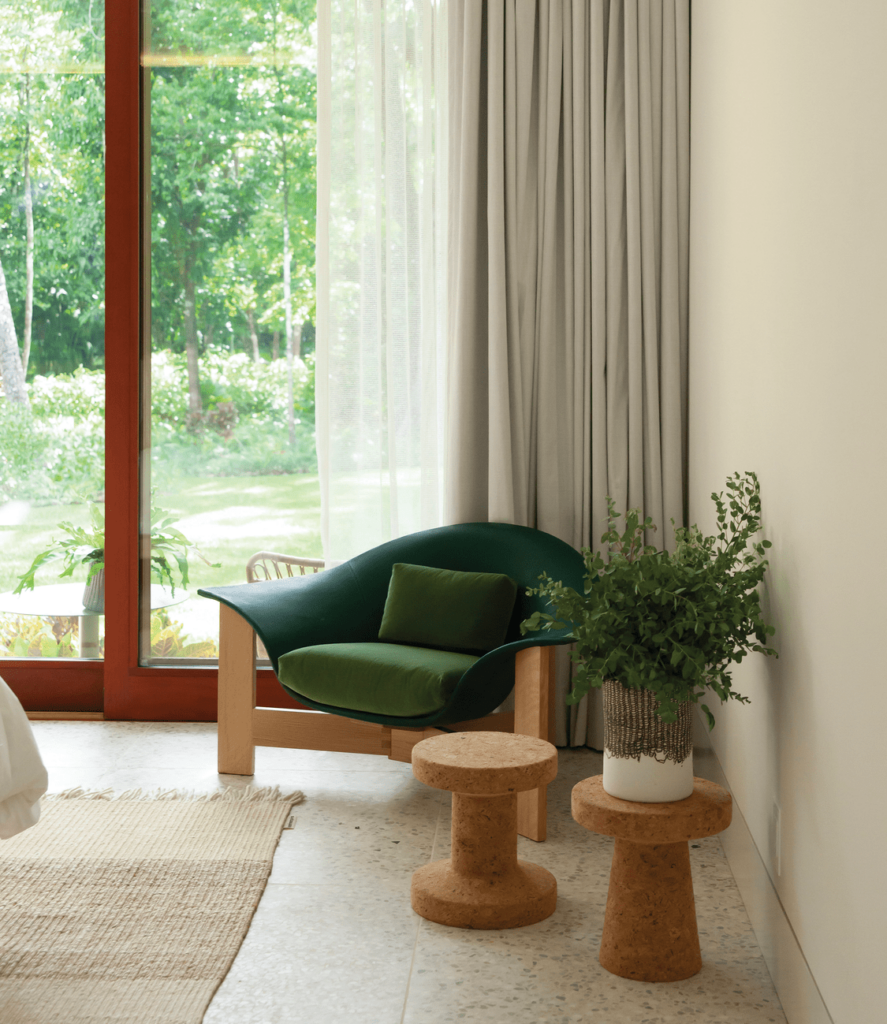A Well-Choreographed Retreat in the Dominican Republic
WRITTEN BY BLAKE MILLER / PHOTOGRAPHY BY IWAN BAAN & KARLA READ
Architect Noah Marciniak was no stranger to projects that can take years to come to fruition. After all, the design process alone can take twelve months. So when he first joined the design team of a residential project in the Dominican Republic in 2012, he knew that due to the project being international, it could take longer than a domestic design would. Little did he know that this breathtaking oceanfront compound wouldn’t be completed for eight more years.
“You always know that any international project will take longer,” he explains of his expectations. But it was an unexpected three-year pause from 2012 to 2015 that really shifted the construction timeline. “A number of things caused the delay for our clients,” he says. “But in 2015, all of the factors aligned in terms of personal life and timing. The seas parted with an opportune moment.”
Headed by principal architect and founder Bryan Young of New York City–based architecture and design firm Young Projects, the 20,000-plus-square-foot home sits on a lush, previously undeveloped lot in Playa Grande, Dominican Republic. The site boasts the best of both worlds: a tropical jungle on the entrance side and a pristine white sandy beach and ocean on the other.
Named as a nod to the waves, “Casa Las Olas” was designed to satisfy the homeowners’ desire for a place that could seamlessly and comfortably accommodate their family and friends while simultaneously drawing inspiration from the rich, natural landscape. “The landscape there is amazing,” says Marciniak. “There are mountains and jungles, which spill right onto the beach. . . . All of those elements inspired the home’s architecture.”
The owners envisioned the home not as a polished, formal vacation house, says Marciniak, but rather as a comfortable, beautifully designed retreat. “The design was about the tactibility and richness of the landscape. . . . We looked at those characteristics on-site and wanted to have an architecture that is compatible and sympathetic to the spectacular landscape that it’s being put within. There’s this cinematic experience when you enter the home,” explains Marciniak. “This was about creating views and an experience and a signal to a place and revelation that you’re here for the ocean.”
Every undulation in the ipe wood slats and winding stone pathways reveals something new. This expert choreography is what sets this striking architectural gem apart from so many others. The abstract roofline pushes and pulls to create pockets of public and private spaces throughout the home. “The roof is the organizer for the entire project,” says Marciniak of the massive architectural element that was constructed from 160 unique scissor trusses, jack trusses, and rafters. “It’s a sculptural element that provides a great deal of beauty, aesthetic, and context to being in the house, but it’s also very functional in organizing the house.” The unique courtyard approach—a circle that’s been stretched in all directions to form an extraordinary structure—results in varying vistas, which emerge as you walk through the property. Every turn unfolds something new about the home.
The interior design complements the architecture by incorporating a modern and tropical color palette coupled with varying textures and finishes that are indigenous to the island. Ipe wood, Venetian plastered walls, and mahogany architectural details abound throughout. Every interior design choice complements the natural landscape with a focus on relaxation. Furniture and decorative objects were sourced from both local Dominican designers (Ysabela Molini with Casa Alfarera) and boutique New York–based designers (Kai-wei Hsu, Hiroko Takeda, Hollis + Morris, Moving Mountains, Egg Collective, and Chen Chen & Kai Williams), including several commissions organized by Colony Design.
Despite taking nearly eight years to complete, the project is truly one of a kind. Sometimes it takes years to bring the perfect project to fruition—as was the case with Casa Las Olas. While it’s spread out over three structures, the home can gather as many as forty people at a time, all coming together in the main home’s alfresco living room and bringing the homeowners’ goal of a family-friendly but elegantly designed vacation retreat to life. “You need people who are passionately committed to making a project like this extraordinary,” says Marciniak. “We definitely achieved that.”









